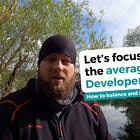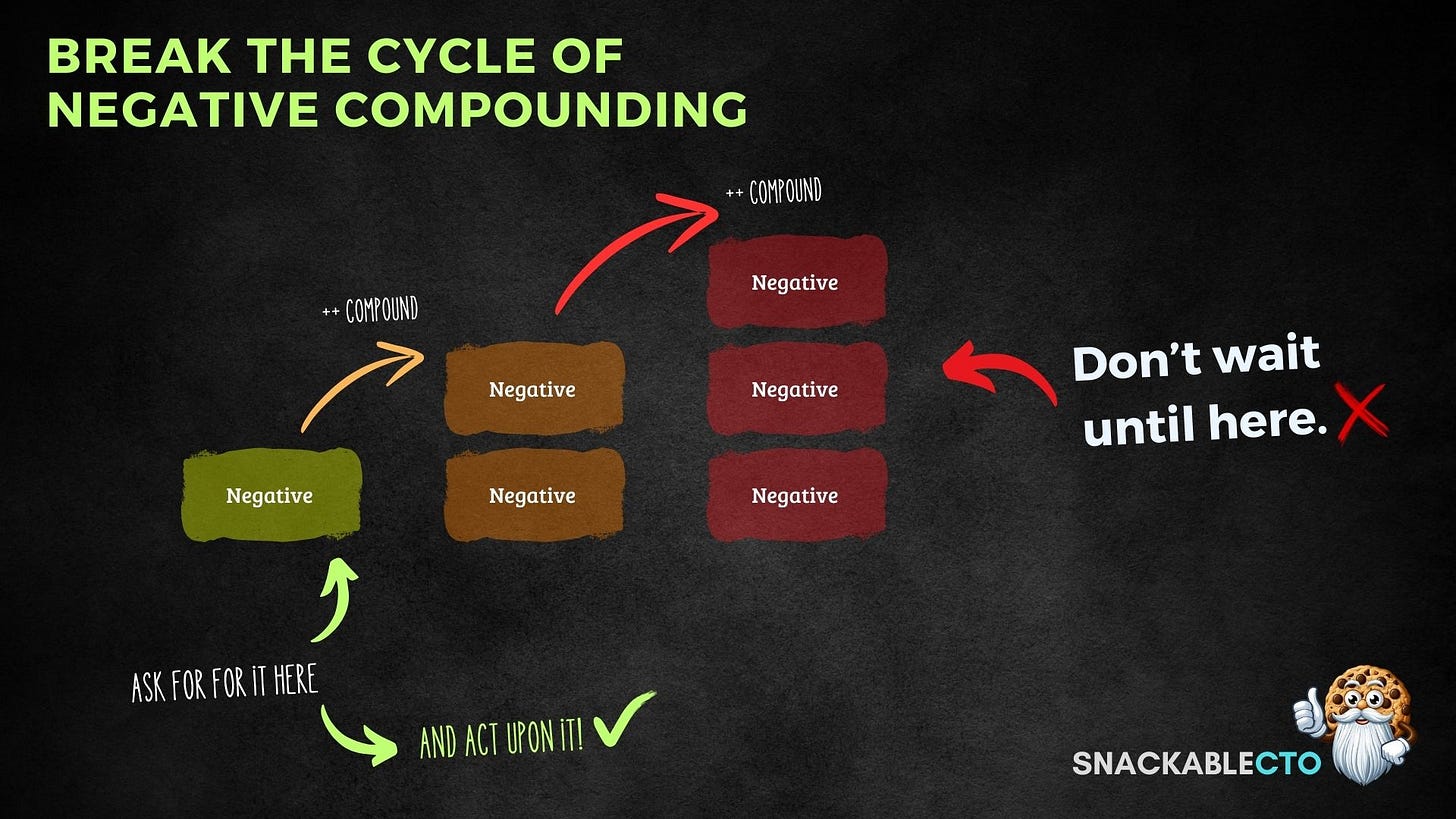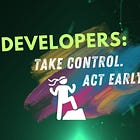Don't Senior-Optimize Your Team
Why The Average Developer Is Key
Many software leaders assume hiring as many senior developers as possible is the quickest way to build a high-performing team. It seems logical that an entire team would be unstoppable if one senior developer was productive. However, this approach often leads to knowledge hoarding, burnout, and high turnover rates. Meanwhile, mid-level developers, the so-called "average developers," are overlooked.
However, these mid-level team members are the backbone of most successful engineering organizations.
In this expanded article, we'll explore why focusing on senior developers can backfire, how the average developer can drive sustainable growth, the ideal team size and structure to support them, and the critical role AI and feedback play in making it all work.
The Pitfalls of a Senior-Optimized Team
Scenario: Too Many Seniors, Not Enough Impact Imagine you are a junior developer hired into a team of highly seasoned engineers. Every meeting has advanced jargon, countless best practices, and references to frameworks you’ve never heard of. You feel out of place, and your on-ramp is dishearteningly steep. Sound familiar?
When a company relies too heavily on senior developers, it faces several hurdles:
Bottlenecks: Senior developers become the final decision-makers for almost everything, from architecture to code reviews. If they’re overloaded or absent, projects stall.
High Turnover: Mid-level and junior developers lack a clear growth path and feel stuck in a team designed around more advanced skill sets. They may leave for environments that value and foster their development.
Over-Complexity: Seniors sometimes get trapped in a "perfect solution" mindset, where they implement cutting-edge or highly intricate architectures. This can alienate others who aren’t on the same level.
Knowledge Hoarding: Whether intentional or subconscious, senior devs may cement themselves by keeping niche knowledge. This silos information, creating risk if key seniors exit.
Expert Bias: A common cognitive bias where experts discount the practical difficulties that less-experienced developers face. They may choose technically elegant solutions that are tough for mid-level colleagues to maintain.
Silo Creation Bias: Some senior engineers, seeking to preserve job security or status, subtly discourage collaboration or open documentation. This stifles team growth and adaptability in the long run.
The bottom line is that a senior-optimized team works against scalability. Scaling a company doesn’t just mean building more features or hiring more bodies—it means building people. If mid-level developers can’t thrive, your team will struggle to grow effectively.
Find me on MentorCruise.com
Why the Average Developer Matters
The core of the Workforce Mid-level developers is the heart of most engineering teams. They’re skilled enough to tackle standard tasks and flexible enough to continue learning. When you set processes, expectations, and tools with the "average developer" in mind, the entire team benefits:
Accessible Onboarding: Junior developers learn more easily in an environment calibrated for mid-level skills. The baseline is neither too simple nor too advanced.
Reduced Dependency: If senior developers leave, the team won’t collapse. Processes and documentation designed for mid-level folks are easier to understand, so knowledge remains within the group.
Efficient Workflows: Mid-level developers can handle most day-to-day tasks, freeing senior developers to focus on strategic contributions.
Lower Barriers to Recruitment: It’s typically easier to find a good pool of mid-level candidates than to chase elusive senior rockstars.
Mitigation of the Perfectionism Fallacy: Senior developers can over-optimize. Mid-level developers lean toward practical and maintainable solutions that keep projects moving.
Resilience Through Balance When you assume an "average" skill level across your processes, you create an environment where senior developers can excel without burdening the team. Juniors have a clear roadmap, and mid-level colleagues can steadily progress without being overwhelmed.
Optimal Team Size and Structure
Why 5-15 People Work for Larger Teams often looks impressive on paper, but communication and cohesion suffer when you scale beyond 15 people in a single group. Dunbar’s Number suggests humans can only maintain a certain number of meaningful relationships. In a development context, the more direct reports or collaborators a senior dev has, the more potential for confusion.
A well-balanced team might look like this:
1-2 Seniors who serve as strategists, mentors, and problem-solvers.
3-5 Mid-level Developers who are the engine of productivity, handling most tasks autonomously.
1-2 Juniors developing core competencies, supported by guidance from seniors and mid-level developers.
Fostering Healthy Collaboration In such a structure, seniors do not become bottlenecks because mid-level developers are encouraged to take the initiative. Feedback loops remain quick and efficient. Knowledge flows from seniors to mid-level devs and juniors, creating a self-sustaining growth cycle.
The Role of AI in Empowering the Average Developer
AI as a Force Multiplier AI tools like GitHub Copilot, ChatGPT, and advanced testing frameworks enable mid-level engineers to achieve tasks that might require senior-level expertise. Instead of always asking a senior developer, mid-level teammates can:
Generate project boilerplates or scaffolding on their own.
Resolve repetitive or less critical tasks quickly.
Learn best practices by comparing AI-generated code suggestions against real-world requirements.
This eases the burden on seniors to handle every complex question, reducing potential bottlenecks.
Avoiding Automation Bias However, it’s essential not to fall into automation bias, where developers trust AI suggestions blindly. Senior developers remain crucial in evaluating these AI-driven solutions, providing context, and ensuring the code aligns with architectural and security standards.
Implementing an Average Developer-Focused Strategy
So, how do you shift a team (or an entire organization) away from a senior-centric mindset?
Set Clear, Attainable Baselines: Align your documentation, onboarding, and coding standards with what a solid mid-level developer would understand.
Encourage Ownership: Make mid-level developers responsible for meaningful parts of the codebase. They’ll learn faster, and seniors won’t be swamped with tasks.
Reward Mentorship: Shift recognition from "Who delivered the most features?" to "Who supported the team’s development?" This signals that helping others grow is as important as personal contribution.
Leverage AI Appropriately: Provide guidelines for using AI tools effectively. Offer training so mid-level developers understand AI’s capabilities and limitations.
Combat Survivorship Bias: Just because a senior-heavy approach worked once in some high-profile startup doesn’t mean it’s the best long-term strategy for your team.
Use Pairing and Peer Reviews: Encourage seniors and mid-level developers to collaborate closely. This cross-pollinates knowledge and prevents siloing.
Document, Document, Document: Ensure that any specialized knowledge, particularly from senior developers, is frequently recorded. This counters the silo creation bias, where seniors unwittingly (or sometimes knowingly) hold on to critical information.
Feedback: The Glue that Holds Teams Together
Frequent, Candid Dialogue Feedback loops are essential. They help correct course when mid-level devs feel out of depth or when seniors might be dictating too many decisions. Without an open channel for dialogue, resentment builds, and those productive mid-level folks will leave for more supportive environments.
Scheduled Retrospectives: A safe space for teams to discuss wins and challenges. This is where seniors can learn if they’re overbearing, and mid-level devs can voice concerns about complexity.
One-on-One: These are private sessions for more personal feedback, whether career guidance for junior developers or pointers for seniors on better mentorship.
Peer Reviews: Code and design reviews shouldn’t just be top-down. Encourage mid-level devs to review each other’s work, fostering ownership and shared responsibility.
To avoid the Dunning-Kruger Effect, Encourage developers to validate their assumptions. Sometimes, experienced developers may be too confident, and less experienced developers might be too timid to speak up.
Subtopic: Break the Cycle of Negative Compounding
This image illustrates how a seemingly small negative situation can grow exponentially if left unaddressed. Each layer of unchecked negativity compounds the problem, culminating in a more significant setback that is much harder to resolve. The message is clear: don’t wait until issues have escalated beyond your control. Instead, invite open dialogue and address concerns early to stay proactive and solution-oriented. By embracing continuous communication—primarily through honest and constructive exchanges—you can transform potential problems into opportunities for growth.
Can you guess which word appears most often in the video?
Here’s a hint: it’s the key to preventing negativity from snowballing.
Overcoming Silo Creation Bias
A subtle but real issue occurs when senior developers, consciously or subconsciously, hoard knowledge to cement their importance. It can happen because they fear losing job security, enjoy being the go-to person, or simply haven’t learned to delegate.
To tackle this:
Foster Transparency: Implement systems like knowledge wikis or shared playbooks.
Celebrate Cross-Training: Make it a point of pride for seniors to train mid-level devs in specialized areas.
Monitor Communication Patterns: If you are sure developers are always the gatekeepers for critical decisions, reevaluate. The best solution is to spread that expertise so the team isn’t paralyzed when a senior is unavailable.
Conclusion: Scale by Empowering the Average
A balanced engineering team doesn’t exclude seniors or undervalue their experience. Instead, it focuses on ensuring each person, mainly the average developer, can do their job effectively. Senior developers become mentors, coaches, and guides, while mid-level developers become the beating heart that keeps daily work on track.
If you’ve relied on a handful of experts to carry out your projects, consider whether your team is truly scalable. You create an environment where everyone can thrive by realigning your processes, culture, and feedback loops around mid-level developers.
Remember: Real scalability isn’t about how many star players you have; it’s about building a cohesive and well-supported team. In that sense, the average developer is anything but average—they are the linchpin of sustainable growth and adaptability.
Best,
Adrian








